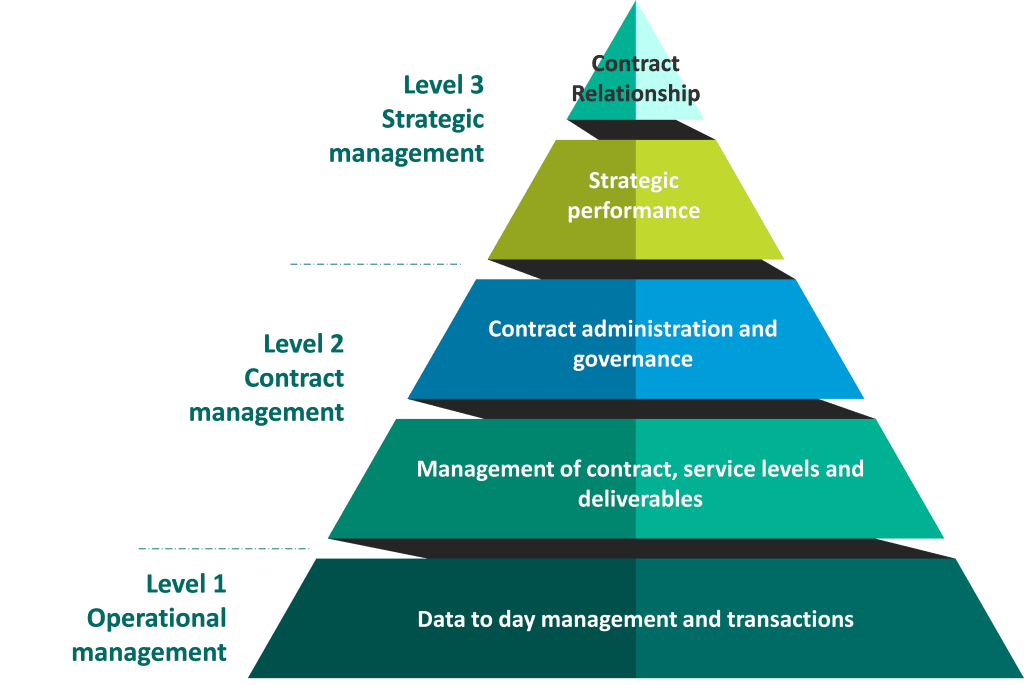Tips for designing and managing contract performance

Contract Performance Management
Everyone knows the “SMART” acronym for goal setting. You know:
Specific
Measurable
Attainable
Relevant
Time-bound.
The trouble is, even if your goals are SMART, they might not work as measures of contract performance. This is even more so when you are working with large or complex contracts.
Here are some tips to help you develop measures, improve them or improve how they are managed and reported.
It’s a relationship, dummy!
The first tip is to recognise that it’s not just a contract, it’s a relationship as well. If you’re not sure if you have or even need a contract relationship or just a plain old contract, the model below will help you work it out.

As contracts are getting longer, focus on outputs (not inputs) relate to services (not products) and have higher numbers of stakeholders to service, they require a relationship-based approach. More importantly, if you want the service provider to do more than just the minimum, then you must (as a client) take an active interest in THEIR needs as well as your own.
Think of it this way. If you manage staff, you must understand their needs if you want to get the best performance out of them. If you don’t, then all you’ll get is the minimum, what we call compliance behaviour.
If you have contract relationships to manage read on if not…you probably do but just don’t know it!
Managing at all three levels
Too much time and effort in contract management are spent measuring and reporting on stuff that doesn’t really matter. We’ve all read that monthly report that’s “just a summary of what we did last month”.
To effectively manage large and complex contracts you need to be managing at three levels.

- Level 1 is the operational management of performance which is the day to day activity.
- Level 2 is a contract management level where you assess KPIs and service levels.
- Level 3 is the strategic level where you are interested in the longer-term objectives and the quality of the ongoing relationship.
You need an understanding of all three levels and measures that reflect them.
Principles of performance management
Rather than a clever acronym, below we have summarised a set of principles that need to be kept in mind when developing and implementing performance measures for complex service contracts. These relate to both the technical nature of measurement and also the all-important behaviours associated with good contract management.
- Outcomes vs inputs – remember that contract measures are outcomes-focused. Reporting on the inputs performed is of no consequence to the measurement of the outcome. If your measures report how many times you processed a work order that’s an input and a measure of volume, not performance.
- Control – parties should be measured on what they can control, they should not be penalised (or rewarded) for factors outside of their control. Control extends to the behaviour and actions of all subcontractors and third parties under direct or indirect control by the provider
- Materiality – this is a case by case issue but in general, a test of materiality should be applied when the measurement requires a large number of measured points. For measures such as compliance, this is a tough one because no client can contract for services to be performed at anything less than 100% compliant. However, this does not preclude a measurement protocol having a materiality provision. What clients are looking for is the management of their risks and reporting that provides comfort that there are no systemic or repeated failures and, that compliance issues when identified are promptly addressed.
- Transparency – both parties need to believe that service reporting is accurate and transparent. This includes the service provider highlighting where there is a failure and where they are unsure if they have achieved the measure or not. In a situation where the outcome is unclear, self-reporting should default to the lower measure in the first instance to allow for review by the parties. This builds trust and confidence that everything is being reported.
- Subjectivity – many measures, particularly at the strategic level have a large element of subjectivity. For example, customer satisfaction is ultimately a subjective assessment. This not a bad thing and subjective measures are essential to assess the quality of how a service is performing. You must have subjective measures and with them an agreed framework for how they will be assessed.
Using these five principles will greatly assist in getting the measures right and keeping them relevant.
If you want to know more or have questions about contract management, designing contract measures or even getting contract management training please contact us.







 We are all about sharing our expertise to help you and your organisation be the best it can be.
We are all about sharing our expertise to help you and your organisation be the best it can be.